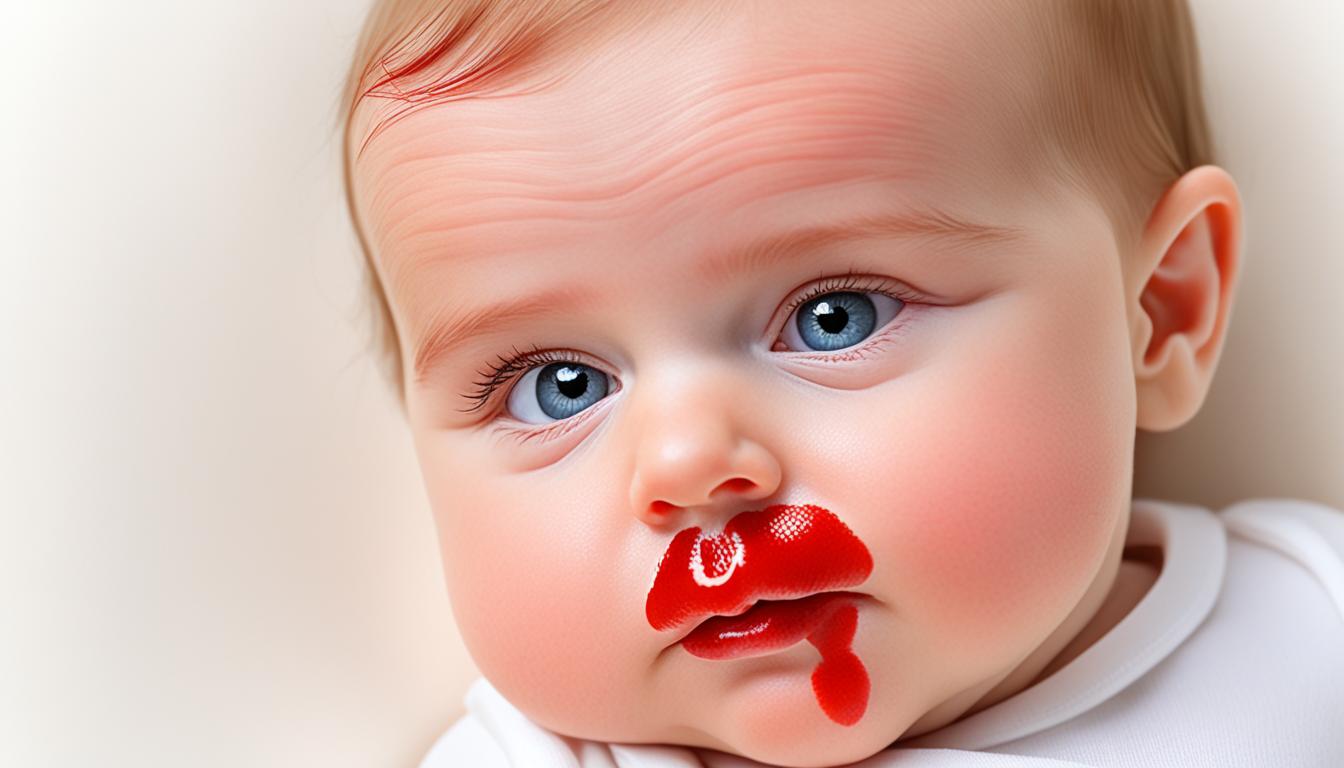Infantile hemangioma is a common vascular birthmark seen shortly after birth. It shows as either bright red or bluish patches or nodules. This makes it the top type of tumor in babies. Although its exact cause isn’t known, experts think it comes from too many blood vessels before birth.
Its signs can differ but could include getting bigger fast, ulcers, bleeding, and changing how nearby features look. A doctor can usually spot it by looking. They might also use tests to be sure it’s infantile hemangioma.
Most of the time, these birthmarks will fade away without needing any treatment. But sometimes, a doctor might need to help. In recent times, using stem cell therapy has shown promise for the tough cases. This method works to help normal blood vessels replace the abnormal ones.
Key Takeaways:
- Infantile hemangioma is a common vascular birthmark in infants.
- The exact cause of infantile hemangioma is unknown, but it is believed to result from an overgrowth of blood vessels during fetal development.
- Symptoms of infantile hemangioma may include rapid growth, ulceration, bleeding, and distortion of nearby structures.
- Diagnosis is typically made based on physical examination, with imaging studies used to confirm the diagnosis.
- In severe or complicated cases, stem cell therapy may be considered as a treatment option.
Causes and Risk Factors of Infantile Hemangioma
The reason behind infantile hemangioma isn’t totally clear. It’s thought to be linked to unusual growth of blood vessels before birth. Even though we don’t fully know where it comes from, we do know some things that might increase the risk.
- Female Gender: Girls tend to get infantile hemangioma more than boys do. The exact reason for this difference isn’t clear yet.
- Caucasian Ethnicity: Babies of Caucasian background have a bigger chance of getting hemangioma. The reasons for this, whether genetic or environmental, are still under study.
- Premature Birth: Babies born early, before 37 weeks, are more likely to have hemangioma. This might be because their blood vessels are still developing and are more fragile than in full-term babies.
- Low Birth Weight: Babies with low weight at birth have a higher risk. This might be due to how their blood vessels grow, but it’s complex and needs more research.
- Maternal Smoking: Babies whose moms smoked when pregnant face a higher risk. How exactly smoking affects this risk is not yet fully understood.
- Genetic Mutations: Some genetic changes can make a baby more likely to develop hemangioma. These changes can affect how blood vessels grow, which can lead to hemangiomas.
These factors may affect how likely a baby is to get hemangioma. But remember, every case is different. A baby might have a mix of these factors. We need more research to fully grasp the causes and risks of infantile hemangioma.
Symptoms and Diagnosis of Infantile Hemangioma
Infantile hemangioma has symptoms that change based on the tumor’s size and where it is. Spotting these symptoms early and finding a true diagnosis is key. It helps in treating and managing it right.
Symptoms of Infantile Hemangioma
The signs of infantile hemangioma often start with a red or bluish birthmark that’s raised. It might also feel like it has bumps. This mark can show up anywhere and might get bigger quickly, changing how it looks. Sometimes, it can cause problems like sores or bleeding.
There are different types of infantile hemangioma depending on where they are:
- Superficial Hemangioma: These are near the skin’s surface and usually look like bright red patches or bumps.
- Deep Hemangioma: They show up deeper in the skin and seem like a deep, bluish lump. These can feel soft.
- Mixed Hemangioma: This type is a mix of the deep and superficial kinds. It looks like red, raised areas mixed with blue patches.
Diagnosis of Infantile Hemangioma
Diagnosis usually starts with a detailed check by a doctor. They look at the birthmark’s size, color, and feel. This helps them figure out if it’s a hemangioma.
During the check, the doctor might:
- Feel the mark to see if there are any unusual lumps.
- Measure it to track any growth or changes.
- Look at its color and texture to tell it apart from other skin problems.
Sometimes, tests like ultrasound or MRI are done to see more of the mark. These tests can tell us more, especially if the hemangioma is large or near important body parts.
By fully understanding the symptoms and doing a good checkup, health providers can confirm it’s infantile hemangioma. This leads to a treatment plan that’s just right for each person’s situation.
Stem Cell Therapy for Infantile Hemangioma
Stem cell therapy offers a new way to treat hard cases of infantile hemangioma. It involves using stem cells that can turn into various types of cells, like those in blood vessels.
This method looks to heal normal blood vessels and stop the growth of bad ones. Early studies show it might make infantile hemangiomas smaller and less severe.
Yet, we need more research to make sure stem cell therapy is really safe and works well. Right now, it’s seen as a last resort for severe cases that haven’t improved with regular treatments.

